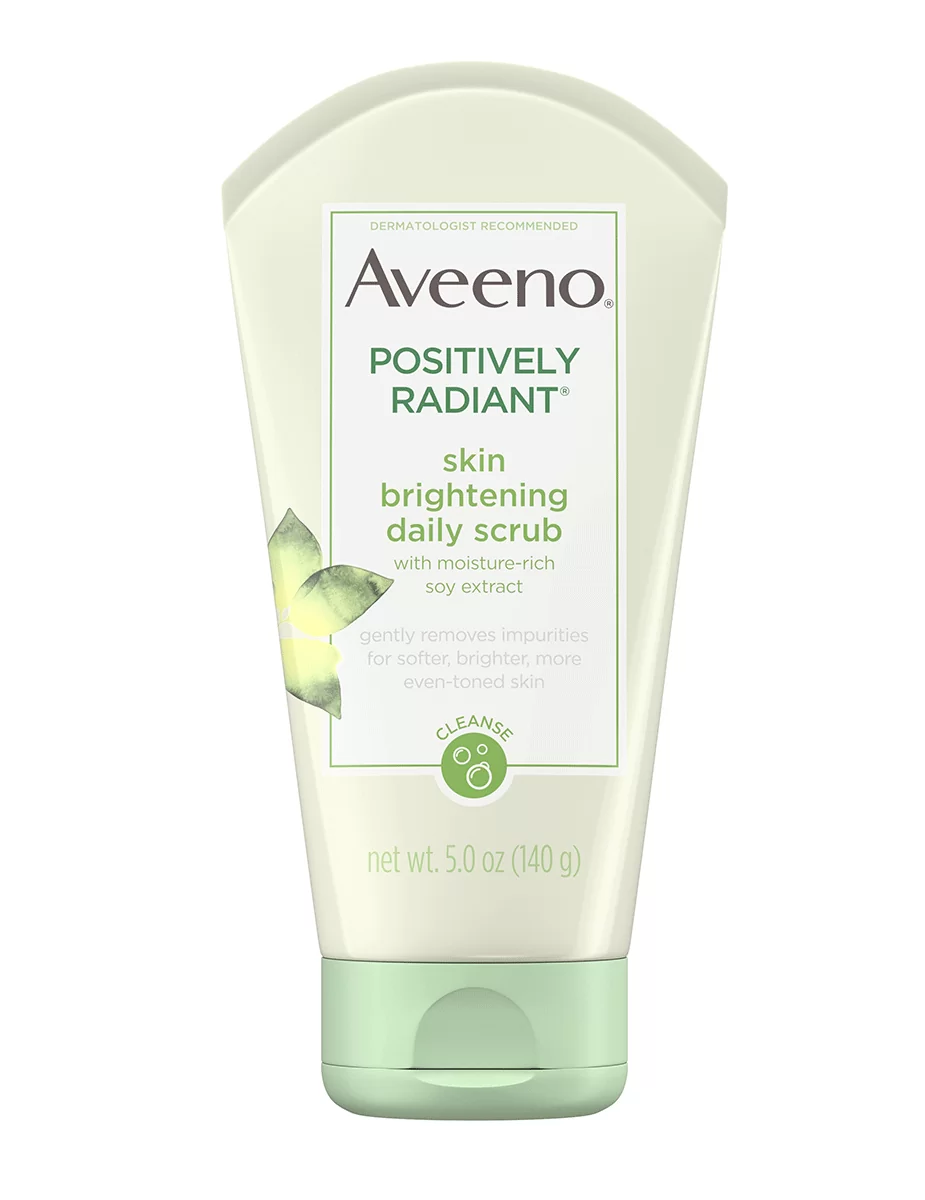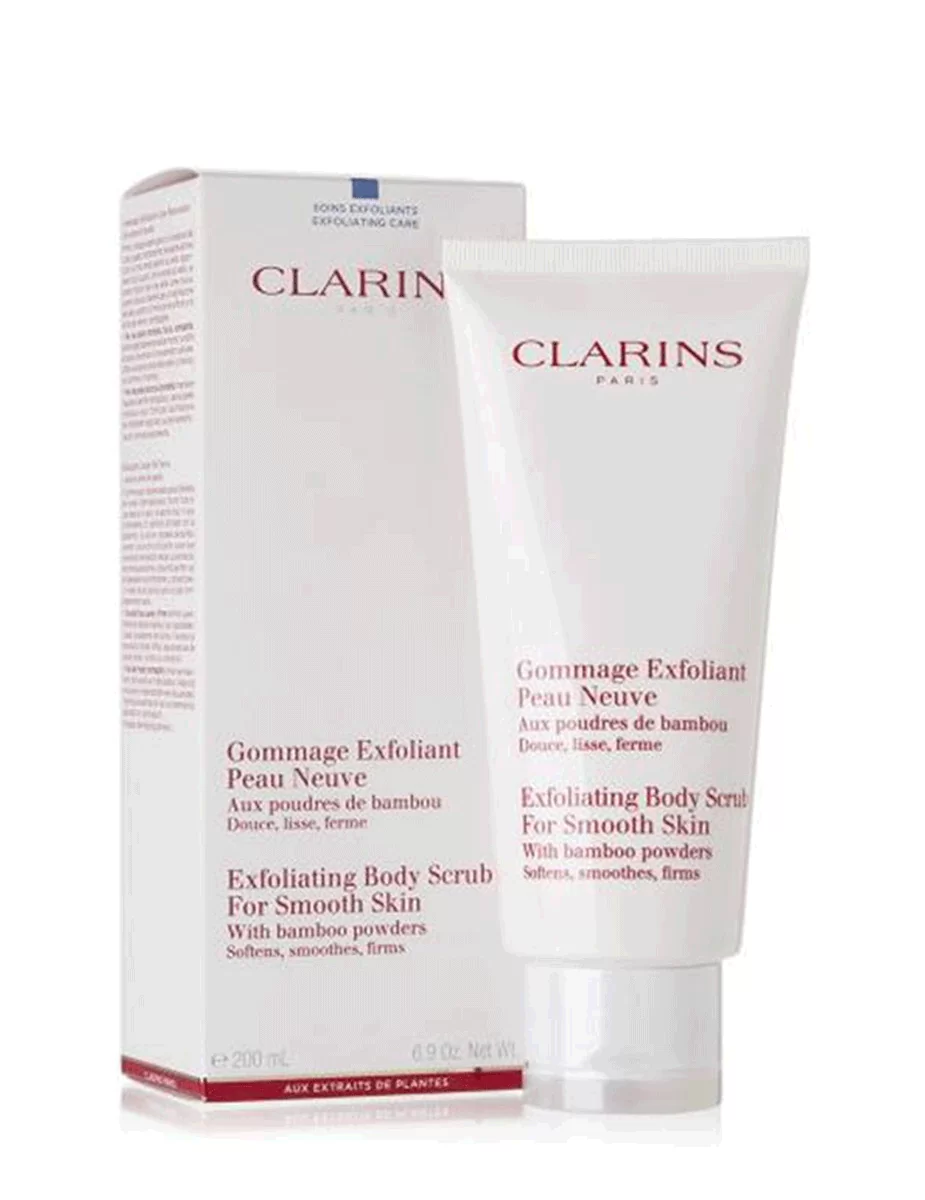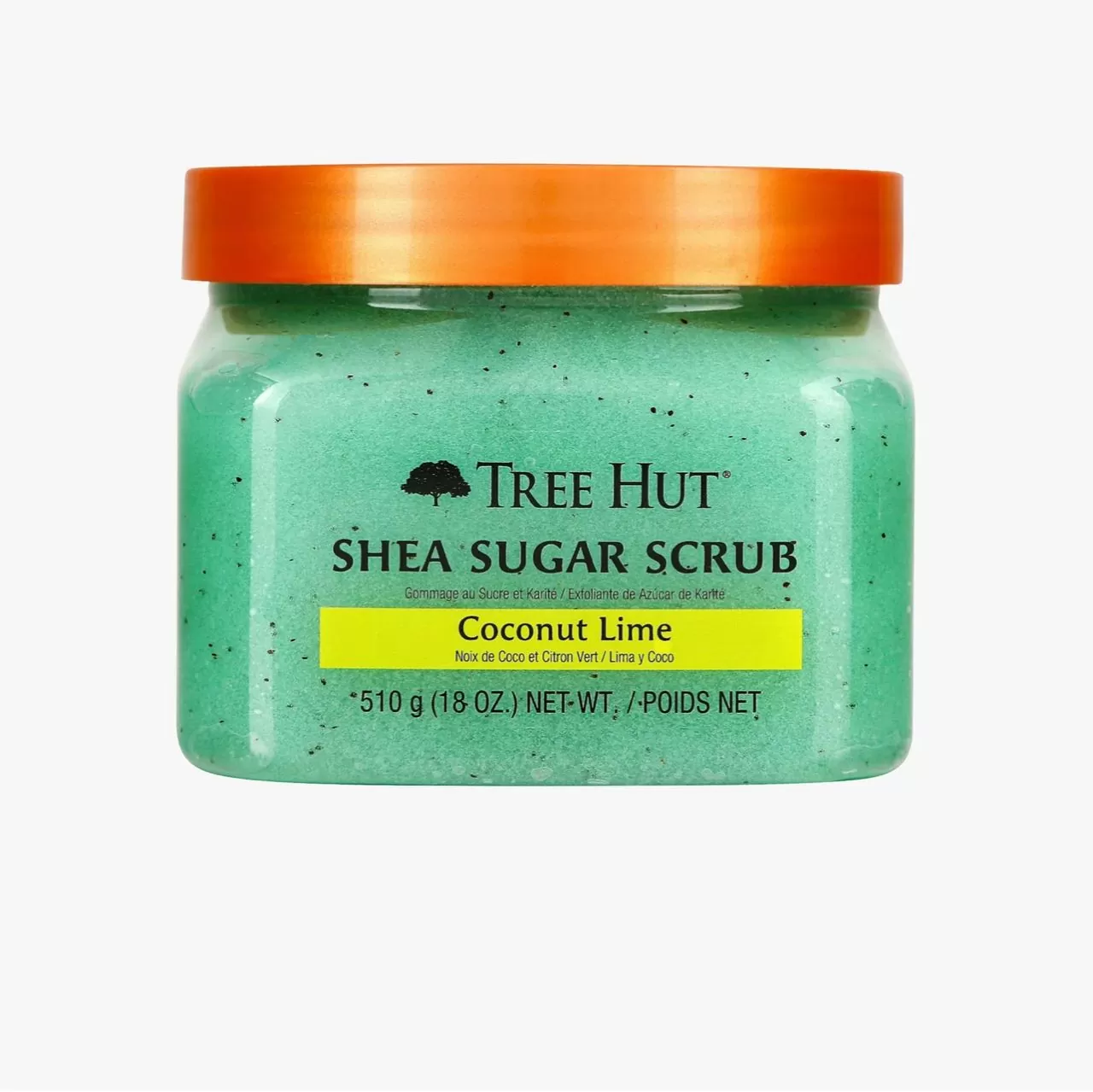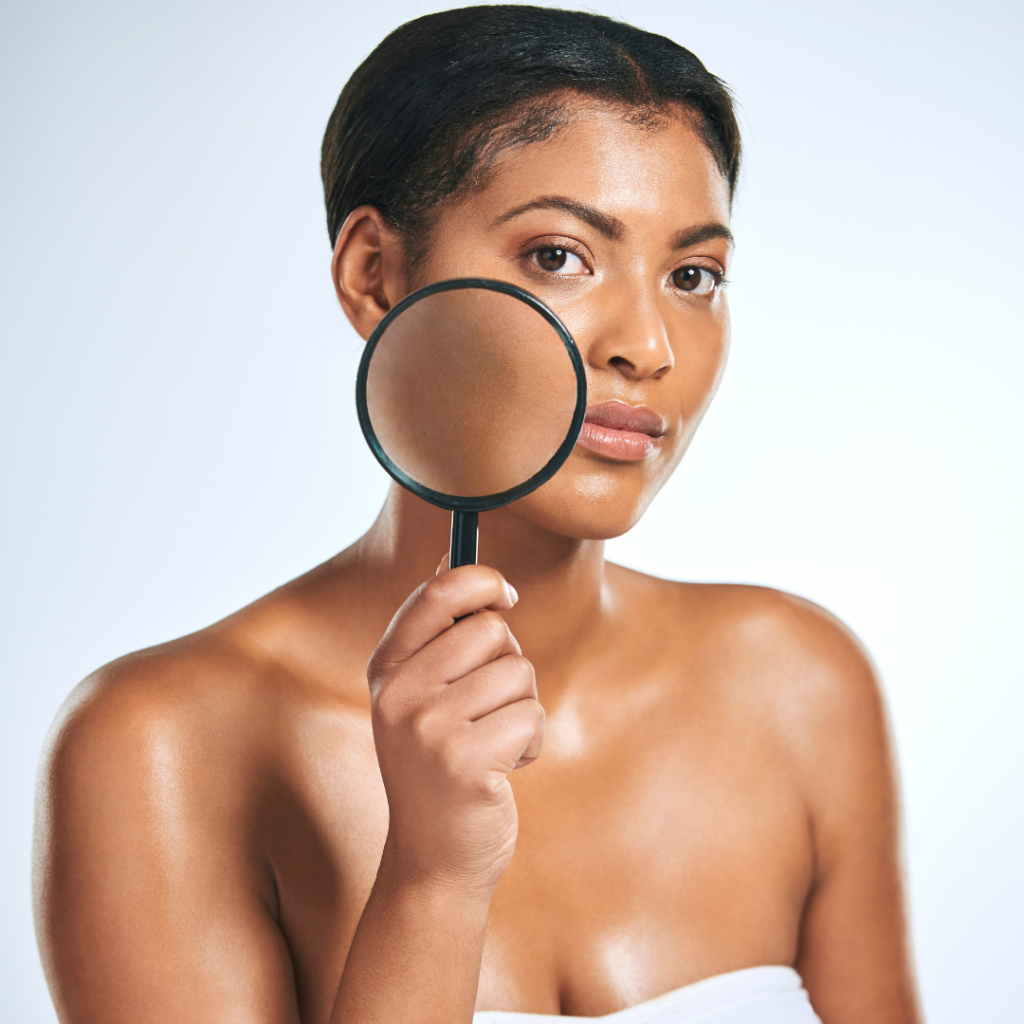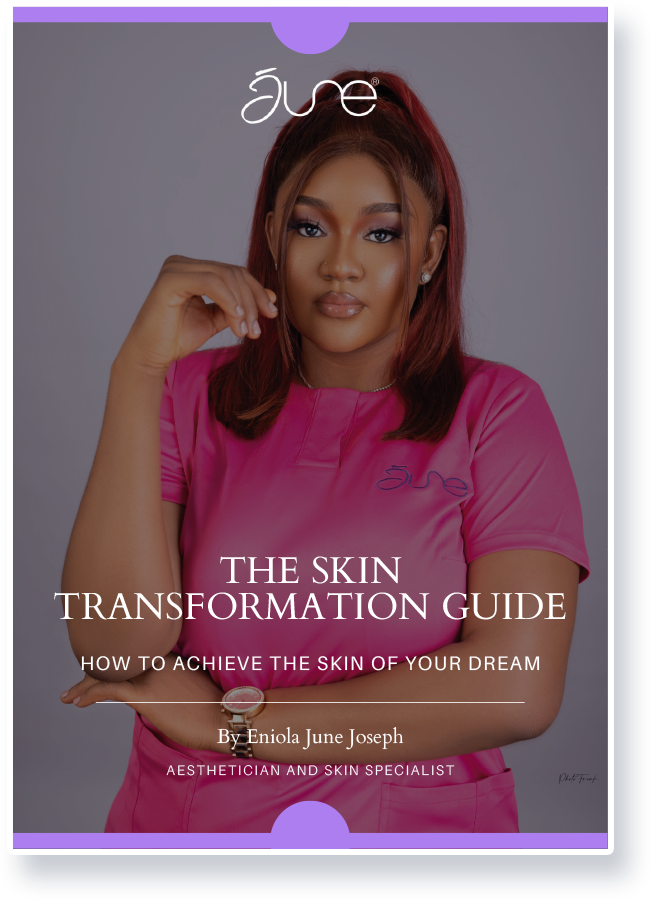Are you eager to achieve beautiful, radiant skin? Well, I’ve got the secret: it’s called exfoliation. Exfoliation is like a gentle scrub that removes dead skin, clears your pores, and reveals fresh, youthful skin. But, there’s a catch – doing it wrong can harm your skin. That’s why I’m here to guide you.
Imagine a special skincare routine that can give you that sought-after glow. I’ll explain how to do it safely and make your skin look amazing. From different types of exfoliation to easy techniques, I’ve got it all covered.
So, if you’re new to this, don’t worry. I’m here to help you start your journey to brighter, healthier skin. Keep reading, and let’s get your skin glowing!
What is Exfoliation?
Skincare exfoliation is like a gentle scrubbing or cleaning for your skin. It helps remove dead skin cells and make your skin look fresher and smoother. Think of it as getting rid of the old stuff on the surface to reveal the new and healthy skin underneath. It can be done with special products or tools, like scrubs or brushes, to give your skin a nice, clean feel. Just be careful not to overdo it, as too much exfoliation can be harsh on your skin.
Reasons You Need to Know How to exfoliate your skin
Understanding how to exfoliate your skin is essential for several compelling reasons that go beyond simply achieving a temporary glow. Here are some extensive explanations of why you should know how to exfoliate your skin:
Removes Dead Skin Cell from skin
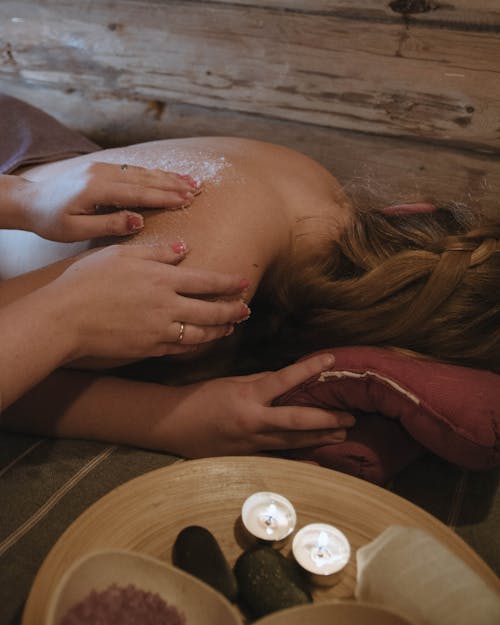
The outermost layer of your skin is constantly shedding dead cells, which can accumulate and make your complexion appear dull and lackluster. Regular exfoliation helps slough off these dead cells, revealing fresher, healthier skin beneath. This process not only promotes a more youthful and vibrant appearance but also allows other skincare products to penetrate deeper into the dermis, maximizing their effectiveness.
Improves Skin Texture:
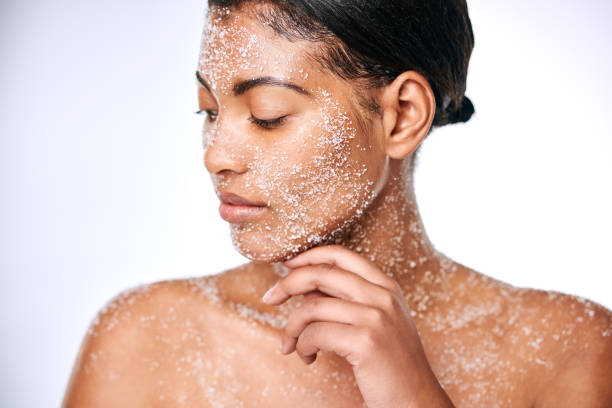
Exfoliation can significantly improve the texture of your skin by smoothing out rough patches, diminishing the appearance of fine lines, and reducing the visibility of acne scars. By removing the buildup of dead skin cells and promoting cellular turnover, exfoliation encourages a more even skin surface, giving you a smoother and more refined complexion.
Enhances Skin Radiance:
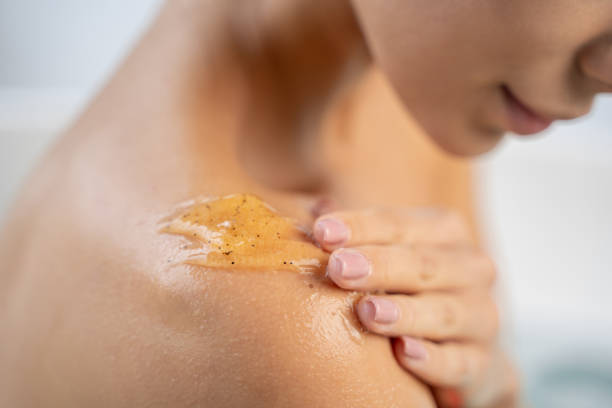
When dead skin cells accumulate on the surface of your body, they can create a barrier that reflects light unevenly, resulting in a dull and lackluster complexion. Exfoliating regularly helps to remove this barrier, allowing light to bounce off your skin more evenly. As a result, your skin appears brighter, more radiant, and more youthful.
Prevents Clogged Pores and Breakouts:

Exfoliation plays a vital role in keeping your pores clear and preventing breakouts. When dead cells, oil, and debris accumulate in your pores, they can become clogged, leading to blackheads, whiteheads, and acne. By gently exfoliating, you can remove these impurities, keeping your pores clean and minimizing the chances of breakouts.
Promotes Even Skin Tone:
Exfoliation can help even out your skin tone by reducing the appearance of hyperpigmentation, sunspots, and discoloration. By removing the top layer of dead cells, you encourage the growth of new cells that are more uniform in color, leading to a more balanced and radiant complexion.
Stimulates Collagen Production:
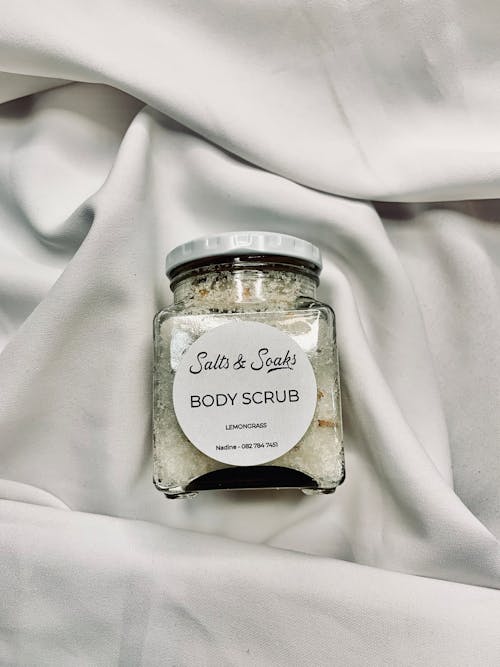
Certain types of exfoliation, such as chemical exfoliation with alpha-hydroxy acids (AHAs) or retinoids, can stimulate collagen production in the deeper layers of your skin. Collagen is a protein responsible for maintaining the skin’s firmness and elasticity. By promoting collagen production, exfoliation can help improve the overall firmness and suppleness of your skin, reducing the appearance of fine lines and wrinkles.
Prepares the Skin for Skincare Products

Exfoliation creates a clean canvas for your skincare products to work their magic. By removing the buildup of dead skin cells and unclogging pores, exfoliation allows serums, moisturizers, and other skincare treatments to penetrate deeper into the skin, maximizing their effectiveness. This means that your expensive skincare products can deliver better results when applied to exfoliated skin.
Methods of Exfoliation
Exfoliation methods offer diverse approaches to rejuvenating the skin, involving both chemical and mechanical techniques. These methods effectively eliminate dead skin cells, unclog pores, and restore a vibrant and revitalized complexion.
Mechanical exfoliation
The mechanical method of exfoliation refers to the process of physically removing dead skin cells and impurities from the surface of the skin using mechanical means. This method typically involves the use of tools, brushes, or abrasive substances to gently slough off the outermost layer of the skin, revealing a smoother and more radiant complexion underneath.
There are several techniques and tools used in mechanical exfoliation. Let’s explore some of the most common ones:
- Scrubs: Exfoliating scrubs or facial cleansers contain small granules or particles that help in physically dislodging and removing dead cells. These scrubs are typically massaged onto damp skin in a circular motion, allowing the granules to loosen and lift away the dead cells. As a result, the skin’s texture becomes smoother and more even.
- Brushes or Sponges: Various brushes and sponges specifically designed for exfoliation can be used to manually remove dead skin cells. These tools usually have soft bristles or textured surfaces that help in gently buff away the outer layer of the skin. They are commonly used on the face or body, and the circular motions used during application aid in the removal of debris and unclogging of pores.
- Microdermabrasion: This is a more advanced mechanical exfoliation technique by skincare professionals. It involves using a handheld device that emits fine crystals or uses a diamond-tipped wand to exfoliate the skin. The device is moved across the skin, creating a gentle abrasion that helps in removing dead cells, stimulating collagen production, and improving the skin’s overall appearance.
- Dermaplaning: This is another mechanical exfoliation method that utilizes a surgical scalpel to gently scrape away dead cells and fine facial hair (vellus hair). This process is usually performed by trained estheticians or dermatologists. It not only improves the skin’s texture but also allows for better product penetration and smoother makeup application.
Regardless of the specific method used, it’s important to note that proper technique and moderation are key to avoiding skin irritation or damage. Over-exfoliation can lead to redness, sensitivity, or even micro-tears in the skin. It’s recommended to exfoliate no more than two to three times per week, depending on your skin type and sensitivity.
Always follow exfoliation with a gentle moisturizer to soothe and hydrate the freshly revealed skin. Additionally, it’s crucial to protect your skin from the sun by using sunscreen, as exfoliating can make the skin more susceptible to UV damage.
you can get the following exfoliate products on Shopjune. co at amazing prices with a discount coupon
Chemical exfoliation
The chemical method of exfoliation involves the use of certain chemical substances to remove impurities from the skin’s surface. Instead of physically scrubbing or abrading the skin, these exfoliants work by dissolving the intercellular bonds that hold the dead skin cell together, allowing them to be easily shed off. Chemical exfoliation offers a controlled targeted approach to achieving smoother, brighter, youthful-looking skin.
There are two primary types of chemical exfoliants: alpha hydroxy acids (AHAs) and beta hydroxy acids (BHAs). Let’s explore each of them in detail:
AHAs:
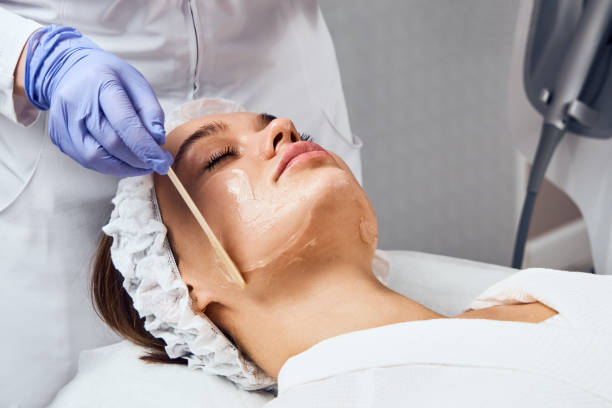
AHAs are water-soluble acids derived from natural sources such as fruit, milk, or sugar cane. Some commonly used AHAs include glycolic acid (derived from sugarcane), lactic acid (found in milk), mandelic acid (derived from almonds), and citric acid (from citrus fruits). AHAs work by breaking down the bonds between dead skin cells, effectively loosening and removing them.
When applied topically, AHAs gently exfoliate the skin, promoting cell turnover, improving texture, and reducing the appearance of fine lines, wrinkles, and hyperpigmentation. They also help in stimulating collagen production, resulting in a smoother and more youthful complexion. AHAs are generally recommended for normal to dry skin types, but they can be used by most skin types with proper precautions and formulations.
Beta Hydroxy Acids (BHAs):

The most commonly used BHA in skincare is salicylic acid, which is oil-soluble. BHAs are particularly effective in exfoliating within the pores and are therefore beneficial for individuals with oily or acne-prone skin. Salicylic acid can penetrate deep into the pores, dissolving excess sebum (oil), dead skin cells, and other impurities. This action helps to unclog the pores, prevent acne breakouts, and reduce inflammation.
BHAs also possess anti-inflammatory properties, making them suitable for sensitive or rosacea-prone skin. They can help improve skin tone and texture while reducing the appearance of blemishes and redness.
It’s important to note that chemical exfoliants come in different strengths or concentrations, ranging from mild to more potent formulas. The strength and frequency of use should be determined based on individual skin type, tolerance, and the specific product’s instructions.
Chemical exfoliants are typically found in various skincare products such as toners, serums, masks, and peels. When incorporating chemical exfoliation into your skincare routine, it’s crucial to start slowly and gradually increase frequency or strength if your skin tolerates it well. Always follow up with a moisturizer and sunscreen to protect the newly exfoliated skin from sun damage.
Step-by-Step Instructions to exfoliate based on your skin type
It’s easy to mix things up when you do not know what to do based on your skin type. Here are step-by-step instructions on how to exfoliate the skin based on different skin types:
for normal skin
- Start by cleansing your face with a gentle facial cleanser to remove any surface impurities.
- Wet your face with lukewarm water to prepare for exfoliation.
- Choose an exfoliating product suitable for normal skin, such as a scrub or chemical exfoliant (AHAs or BHAs).
- Apply a small amount of the exfoliant to your fingertips or a clean brush.
- Gently massage the exfoliant onto your face using circular motions, avoiding the delicate eye area.
- Continue massaging for about 1-2 minutes, focusing on areas prone to dryness or roughness.
- Rinse your face thoroughly with lukewarm water, ensuring that all the exfoliant is removed.
- Pat your skin dry with a clean towel.
- Follow up with a hydrating toner, serum, and moisturizer to replenish and nourish the skin.
- Apply sunscreen before heading out, especially if you exfoliate in the morning.
for dry skin
- Cleanse your face with a mild, hydrating cleanser to remove any dirt or makeup.
- Dampen the face with lukewarm water to prepare for exfoliation.
- Opt for a gentle chemical exfoliant with AHAs (such as glycolic or lactic acid) that won’t overly dry out your skin.
- Apply a thin layer of the chemical exfoliant to your face, following the product’s instructions for application time.
- Allow the exfoliant to sit on your skin for the recommended duration.
- Rinse your face thoroughly with lukewarm water.
- Gently pat your skin dry with a soft towel.
- Apply a hydrating serum or moisturizer to replenish moisture.
- Finish with a broad-spectrum sunscreen to protect your skin.
for oily or acne-prone skin type
- Cleanse your face with an oil-free, gentle cleanser to remove excess oil and impurities.
- Wet your face in the shower with lukewarm water.
- Choose a chemical exfoliant with BHAs (such as salicylic acid) to penetrate and unclog pores effectively.
- Apply a thin layer of BHA exfoliant to your face, focusing on areas prone to breakouts.
- Allow the exfoliant to sit on your skin for the recommended duration.
- Rinse your face thoroughly with lukewarm water.
- Pat your skin dry gently with a clean towel.
- Apply an oil-free moisturizer or gel specifically formulated for oily or acne-prone skin.
- Use non-comedogenic sunscreen to protect your skin from sun damage.
for sensitive skin type
- Cleanse the face with a mild, fragrance-free cleanser suitable for sensitive skin.
- Choose a gentle exfoliating product specifically designed for sensitive skin, such as a mild scrub or enzymatic exfoliant.
- Apply a small amount of exfoliant to your fingertips or a clean brush.
- Gently massage the exfoliant onto your face using light pressure and circular motions.
- Be extra cautious and avoid excessive rubbing or irritation.
- Rinse your face thoroughly with lukewarm water.
- Pat your skin dry with a soft towel.
- Apply a gentle, hypoallergenic moisturizer to soothe and hydrate your skin.
Step-by-Step Instructions to exfoliate your face
Exfoliating your face is a different ball game than doing the same for your body. To exfoliate your face safely, we have provided a step-by-step guide on that.
Start by cleansing your face
Use a gentle facial cleanser to remove any dirt, makeup, or impurities from your skin. Rinse thoroughly with lukewarm water and pat your face dry with a clean towel.
Choose the right exfoliant
Select an exfoliating product that suits your skin type and preferences. You can opt for a physical exfoliant (scrub) or a chemical exfoliant (acid-based product). Make sure the product is specifically formulated for facial use.
Apply the exfoliant
Follow the instructions provided with your chosen exfoliant. If it’s a scrub, take a small amount and apply it to your fingertips or a clean brush. If it’s a chemical exfoliant, pour a small amount onto a cotton pad or your fingertips.
Gently massage the exfoliant onto your face
Using circular motions, start applying the exfoliant to your face. Begin at your forehead and work your way down to your cheeks, nose, and chin. Be mindful of avoiding the delicate skin around your eyes.
Focus on problem areas
If you have specific areas of concern, such as dry patches or blackheads, give them a little extra attention during the exfoliation process. Be gentle and don’t apply excessive pressure, especially if you’re using a physical exfoliant.
Pay attention to your skin’s response
As you’re massaging the exfoliant, pay attention to how your skin feels. If you experience any discomfort, stinging, or irritation, stop immediately. It’s important to be gentle and not over-exfoliate, especially if you have reactive skin.
Rinse thoroughly
Once you’ve finished exfoliating, rinse your face thoroughly with lukewarm water. Ensure that all traces of exfoliants are removed from your skin.
Pat dry and Moisturize
Gently pat your face dry with a clean towel, being careful not to rub or tug on your skin. Immediately following exfoliation, apply a moisturizer to hydrate and nourish your skin. This step helps restore moisture and maintain the skin’s barrier function.
Sunscreen application
Exfoliating can make your skin more sensitive to the sun, so it’s important to protect it. Apply a broad-spectrum sunscreen with an appropriate SPF to shield your skin from harmful UV rays.
Follow recommended frequency
Exfoliation frequency depends on your skin type and the exfoliant you’re using. As a general guideline, exfoliating two to three times per week is sufficient for most skin types.
Key Considerations For Successfully Exfoliation
Exfoliation can be a beneficial step in a skincare routine, but it’s important to approach it with care to achieve successful results and maintain skin health. Here are key considerations to keep in mind for successful exfoliation:
- Skin Type: Understand your skin type and choose exfoliation products and techniques accordingly. Different skin types may require different levels of exfoliation and varying frequencies. Adjust your approach to cater to the specific needs of your derm.
- Gentle Approach: Be gentle when exfoliating. Avoid excessive pressure or scrubbing, as it can cause skin irritation and damage. Treat your skin with care and use gentle circular motions especially when you exfoliate your face to ensure effective exfoliation without aggression.
- Frequency: Determine how often you should exfoliate based on your skin type and the specific product you’re using. Over-exfoliating can disrupt the skin barrier, leading to sensitivity and dryness. Follow the recommended guidelines and adjust if needed.
- Product Selection: Choose exfoliants suitable for your skin and concerns. Physical exfoliants (scrubs) are ideal for removing surface debris, while chemical exfoliants (AHAs, BHAs) penetrate deeper into the skin. Consider your skin’s sensitivity and the specific benefits you’re looking for when selecting products.
- Patch Test: Before introducing a new exfoliant, perform a patch test on a small area of your skin to check for any adverse reactions or allergies. This will help you avoid potential irritation or sensitization.
- Sun Protection: Exfoliation can make your skin more vulnerable to UV damage. Always follow exfoliation with sunscreen application to protect your skin from harmful rays. Choose a broad-spectrum sunscreen with an appropriate SPF to shield your skin.
- Hydration: After exfoliation, replenish moisture by using a hydrating moisturizer. Exfoliation can temporarily disrupt the skin’s barrier, so the best way is to hydrate and nourish the skin to maintain its health and integrity.
- Listen to Your Body: Pay attention to how your skin responds to exfoliation. If you experience excessive redness, irritation, or discomfort, reduce the frequency or intensity of exfoliation. Everyone’s skin is unique, so it’s crucial to adjust your exfoliation routine based on your skin’s individual needs.
Wrapping Up
This article highlights everything you need to know about what exfoliation is, how often you should exfoliate for your dermis type whether once a week, skin care products to use, and all. The beauty of it all is that you can do all these at home if your skin is not too sensitive but if it is, then it’s best to seek a professional’s help.

